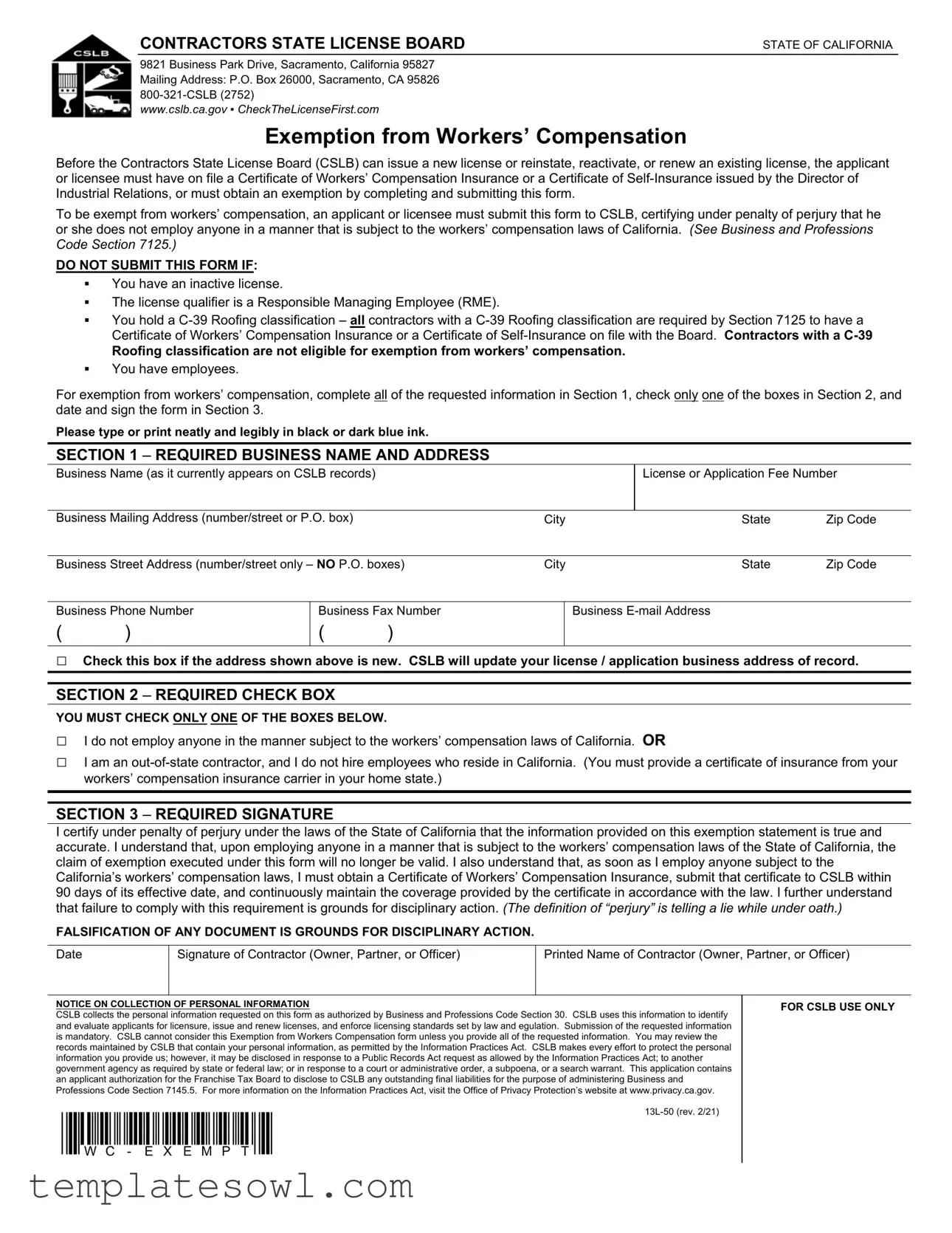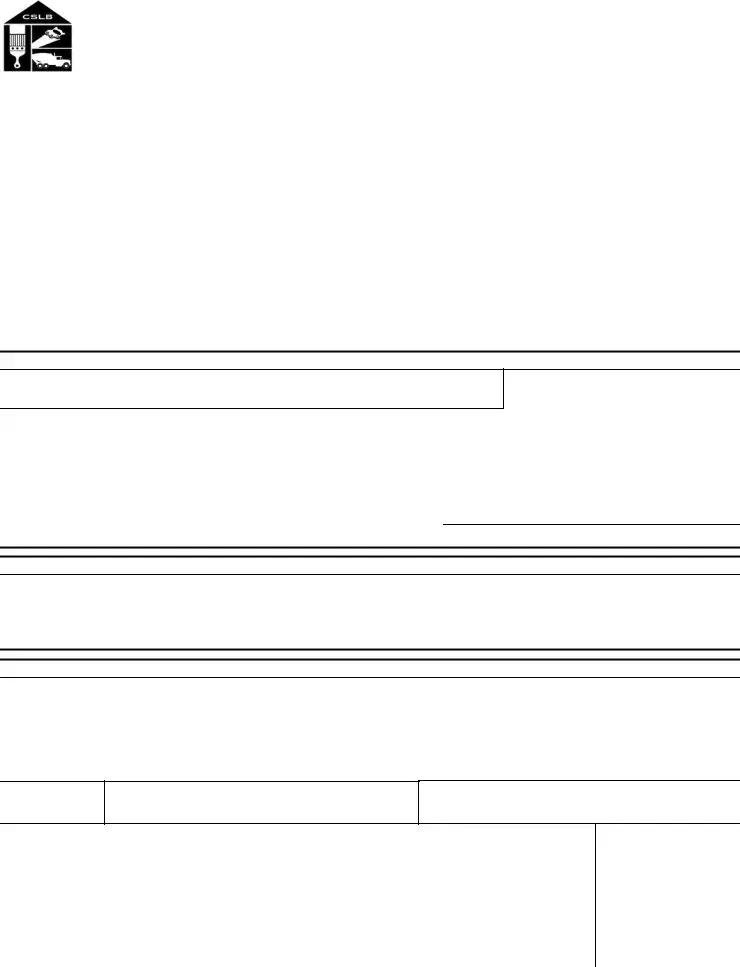Filling out the 13L 50 form can seem daunting, but avoiding common mistakes can make the process smoother. One frequent error is failing to submit this form when it's necessary. For example, if you currently have employees or hold a C-39 Roofing classification, you cannot claim exemption from workers’ compensation. Ignoring these requirements can lead to complications with the Contractors State License Board (CSLB).
Another common mistake occurs in Section 1, which asks for crucial business information. Many applicants neglect to ensure that the business name matches exactly with the CSLB records. If this detail is off, it might create confusion and delay the processing of your application. Always double-check this information for accuracy.
In Section 2, applicants must check only one box. Checking more than one misrepresents your status and can result in the rejection of your application. Make sure to carefully read each option and verify that the box you select aligns with your circumstances.
Legibility is also critical. Applicants often rush through the form and submit it without ensuring neat handwriting. Remember, it’s essential to print using black or dark blue ink. Illegibility can cause administrative delays or misunderstandings, potentially jeopardizing your application.
Don’t overlook Section 3, which requires your signature and printed name. Some individuals forget to sign the form or fail to date it, leading to unnecessary delays in the approval process. Ensure you complete this section thoroughly to avoid setbacks.
Another stumbling block is understanding the penalties for falsification. Many people overlook the legal implications of providing inaccurate information. Remember, signing under penalty of perjury is serious. Providing false statements can result in disciplinary action. Therefore, it's vital to be honest and accurate when certifying your employment status.
Staying informed about the certification from your insurance carrier is also essential. If you claim exemption as an out-of-state contractor, be ready to provide certification of insurance from your workers’ compensation carrier in your home state. Many applicants forget this step, which can complicate the exemption process.
Finally, some individuals fail to include their current contact information, such as phone numbers and email addresses. If you provide outdated or incorrect contact details, you may not receive crucial communication from the CSLB about your application. Keeping this information up to date is vital for the continued flow of communication.
By familiarizing yourself with these common pitfalls ahead of time, you can navigate the 13L 50 form with confidence. Take a moment to review each section carefully, ensuring all requirements are met, and avoid common mistakes that could hinder your application process.

